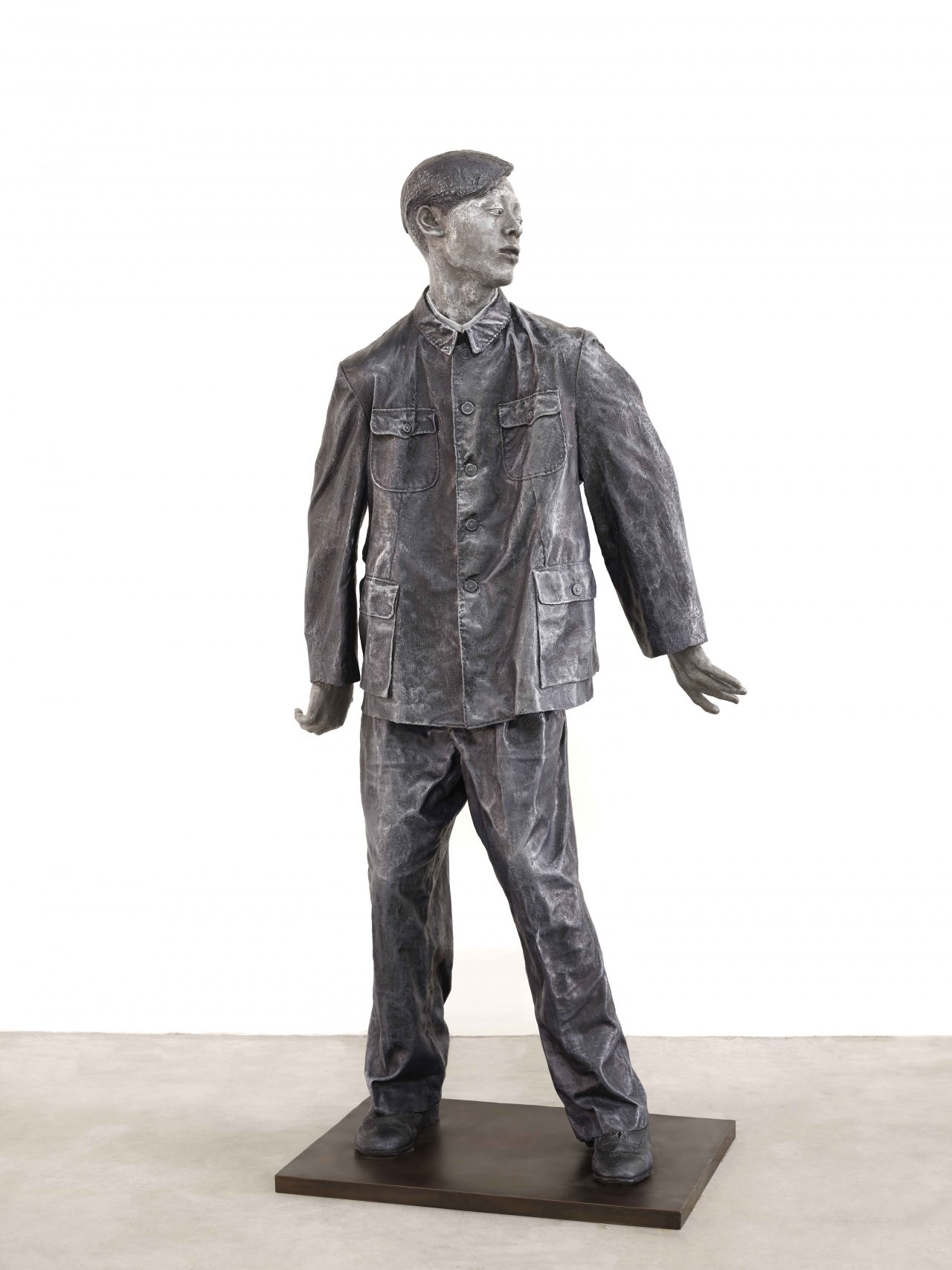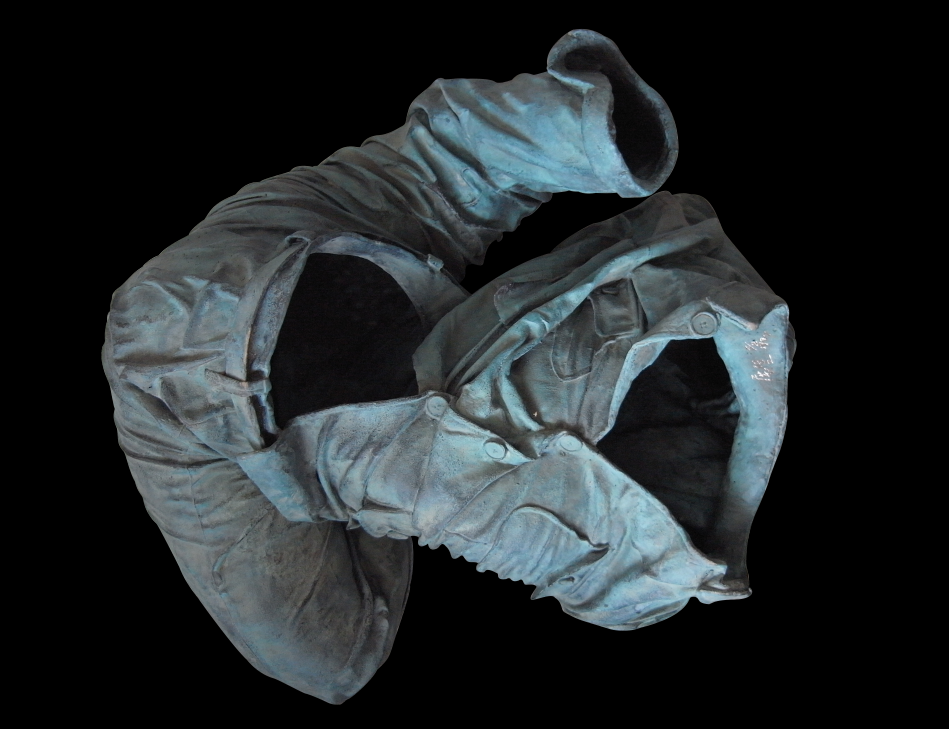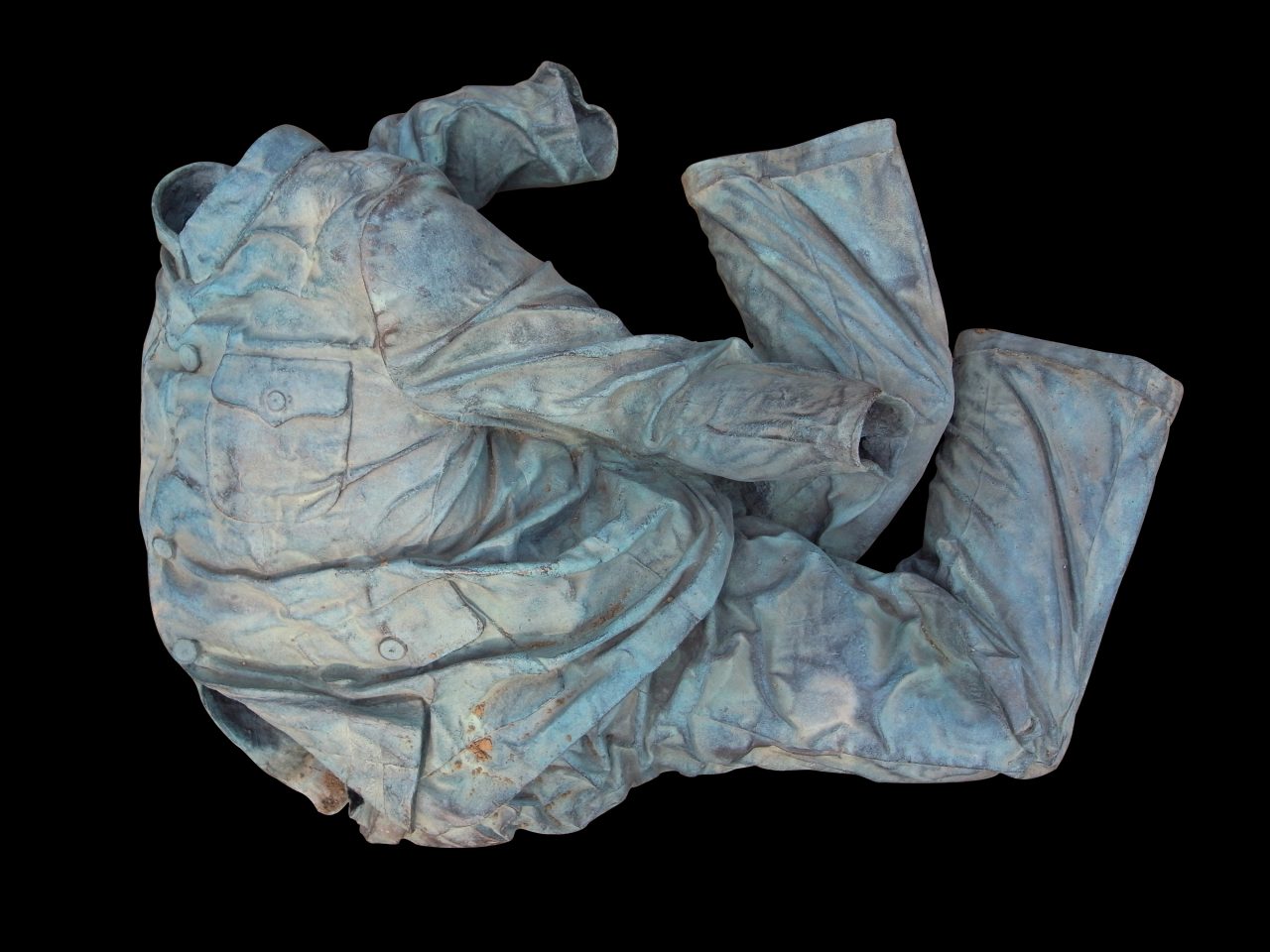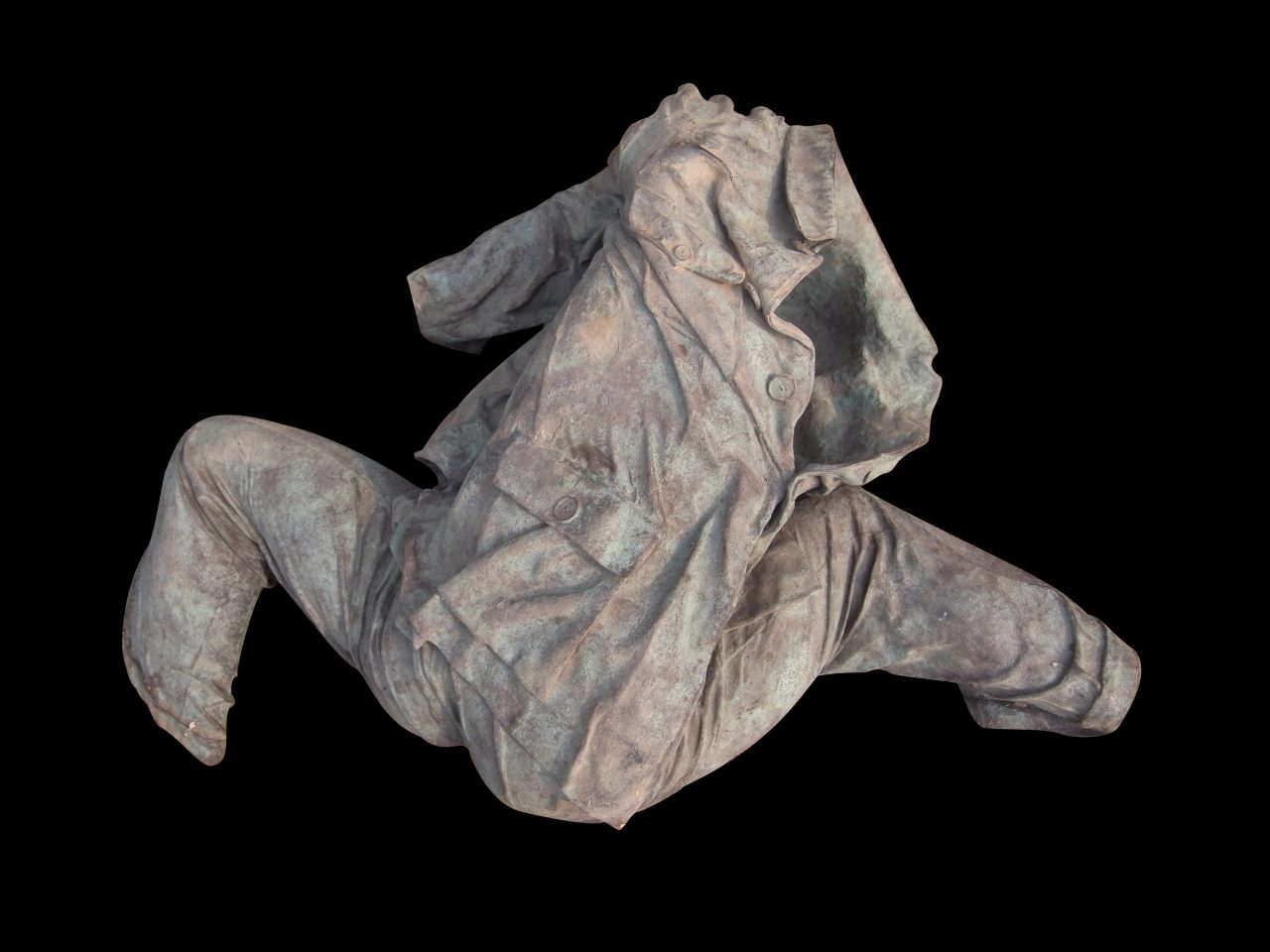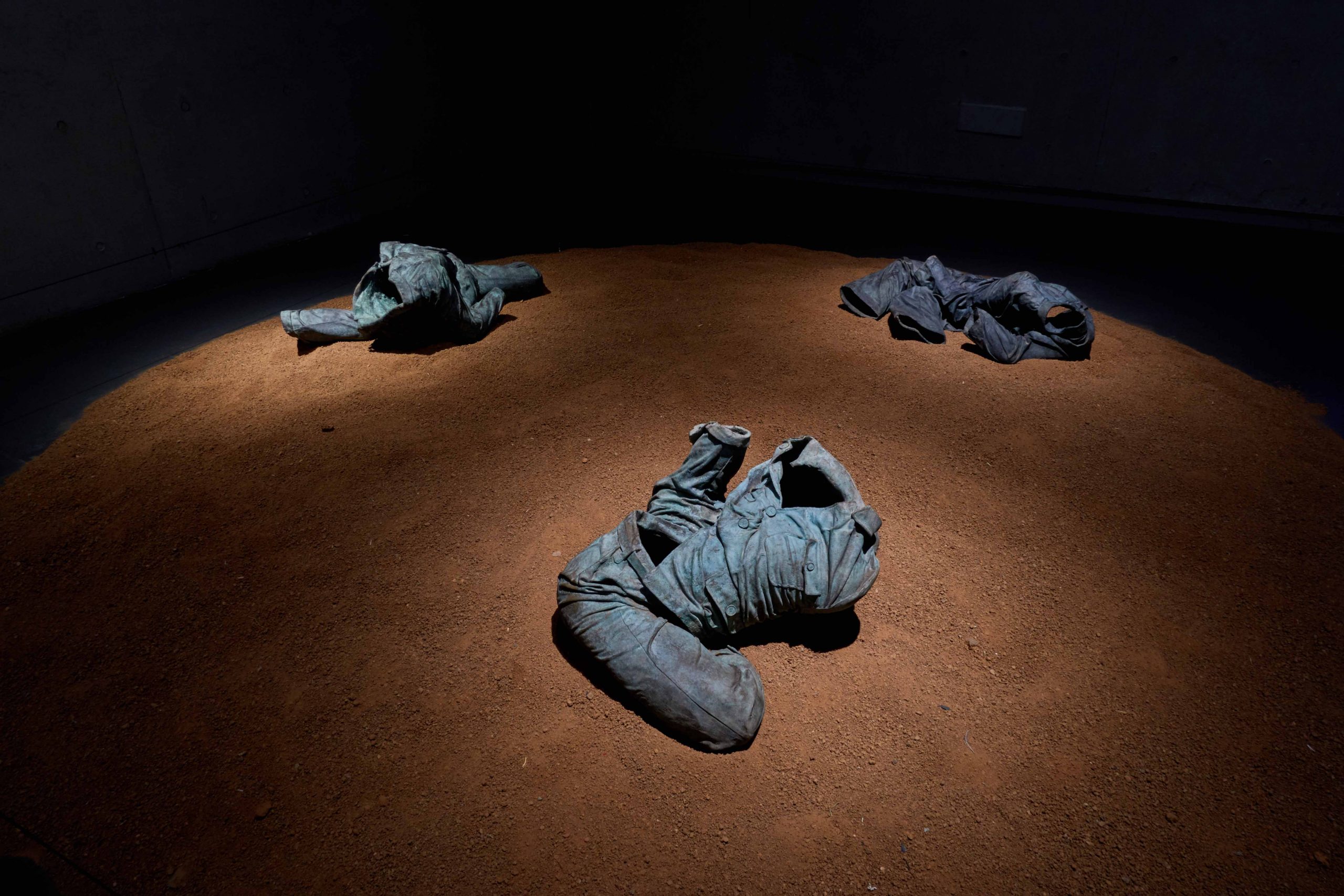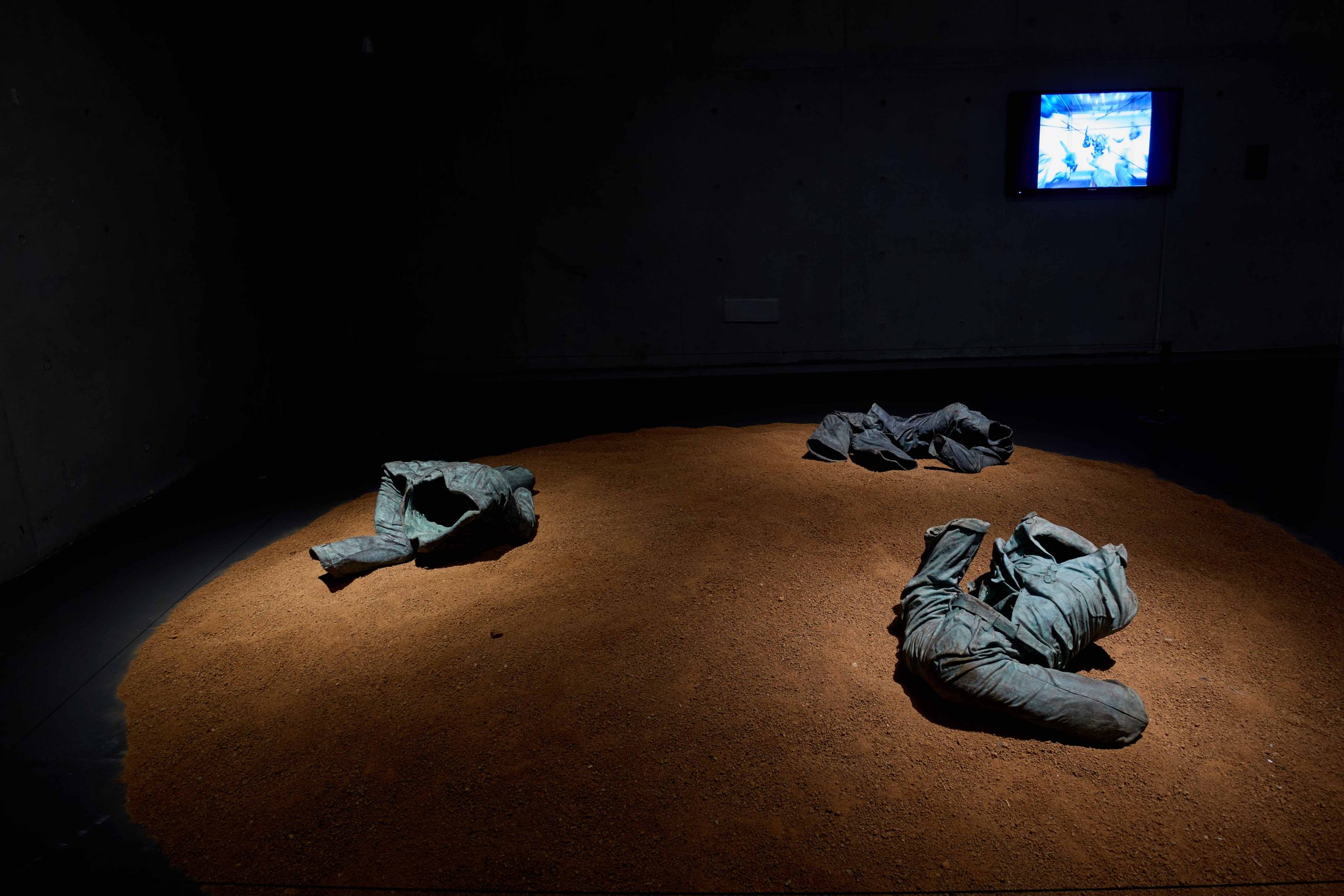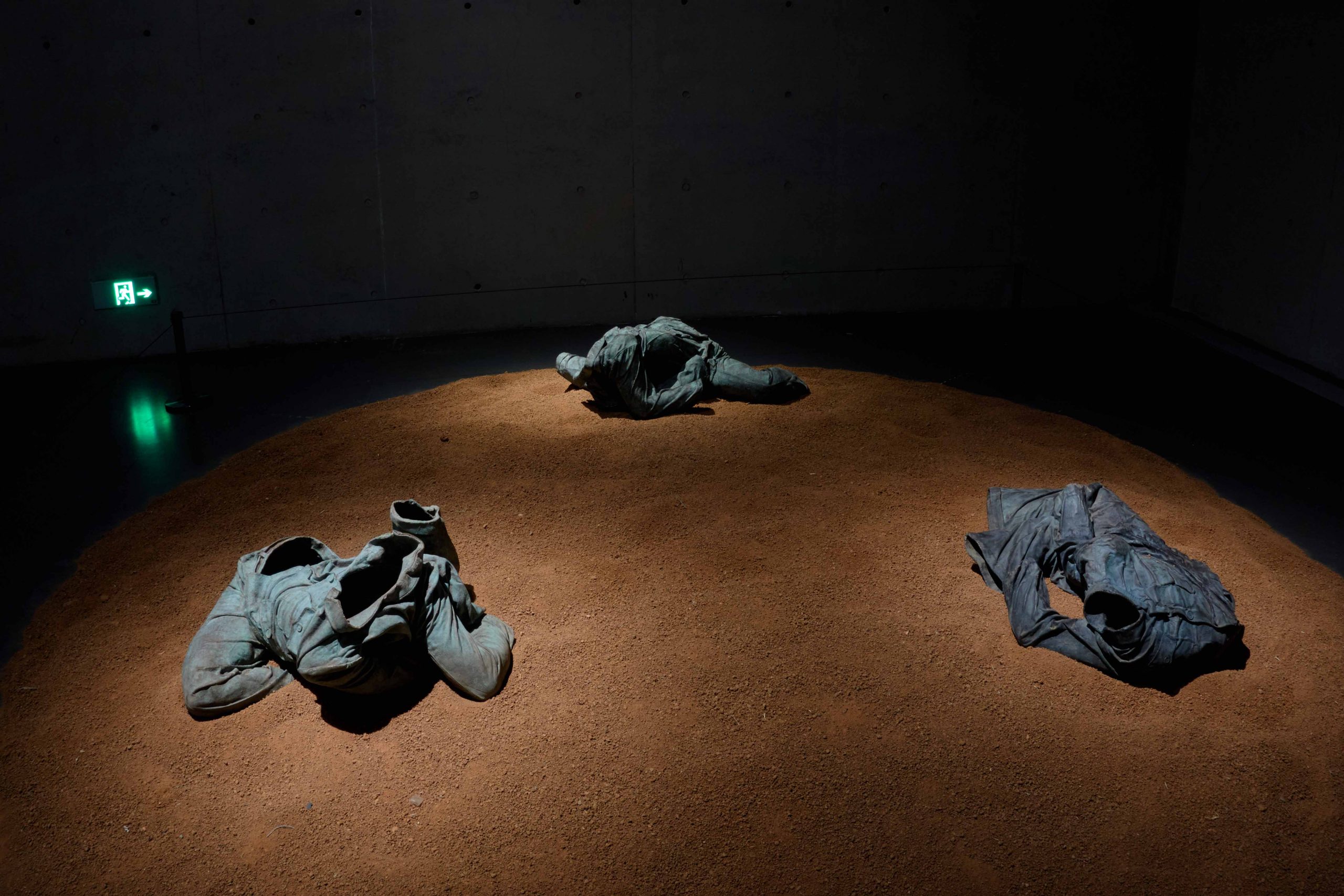Zhan Wang: "Mao Suit Man"
This online viewing room will present Zhan Wang's work in the early 90's. The works in this period focus on the relationship between individual and society, and also reflect the transition and transformation of Zhan Wang's sculptural language from realism to concept. The online viewing room will be launched from 8 August 18:00 to 14 August 24:00 (CST).

It was in 1990 when I started to work individually. In that year, I cooperated with my classmates and made The Pavement together in front of the entrance of National Olympic Sports Center for the Asian Games, the theme was depicting ordinary people of anti-hero image. In fact, I had already expressed the concept of ordinary people in the work of The Street that I made for graduation in 1988. I accepted various traditional methods and influences in many ways so I did not fine my own language.
Although I used the concept and method of Hyperrealism which is making a real human sculpture and molding the whole after putting on real clothes in later series of works such as Sitting Girl, I can still empty my mind and forgetting all sculptural languages accumulated by predecessors. Starting from the beginning and unknown is also starting from life itself, using my own eyes to see the world.
However, what was unexpected is that when I truly open my eyes, what I found first was endless pain: a hopeless uncertainty; a chaotic logic; and negative intuition. Thus, I began to bypass all emotions making use of creating art and artwork, pretending to withdraw myself from everything. I began to complete the deduction of rational structure and language, getting closer to the truth and finding some methods gradually and solving problems.
If you ask me what is my life experience, I would say it is more interesting to be company with unknown and knowledge.
—— Zhan Wang, "My Universe: My Work", Art Guide, 2014
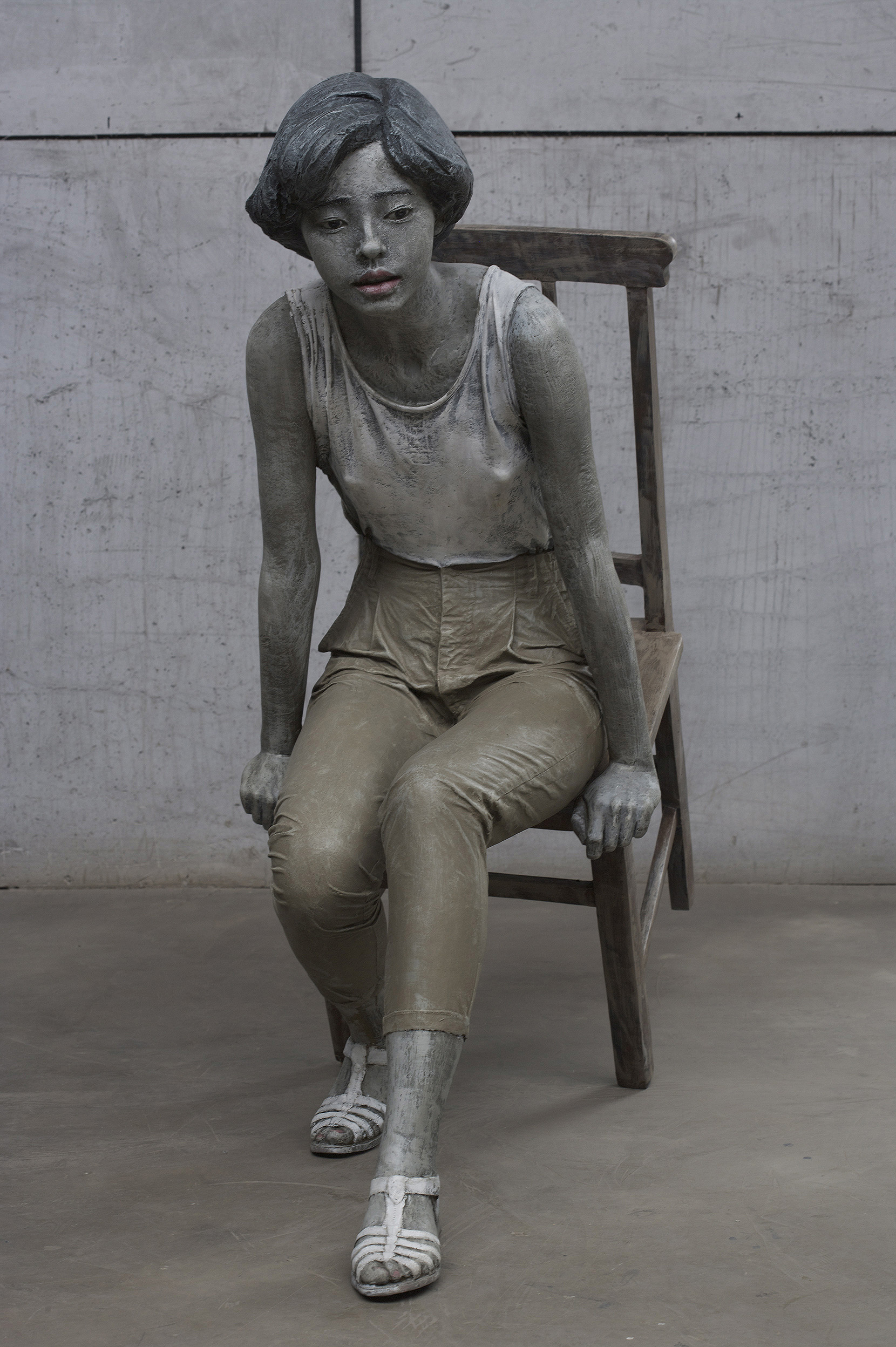
Sitting Girl, 1990, Edition of 8,Bronze,128 x 127 x 56 cm
Sold in the first auction of Christie's (Shanghai) for RMB 5.6625 million in 2013.
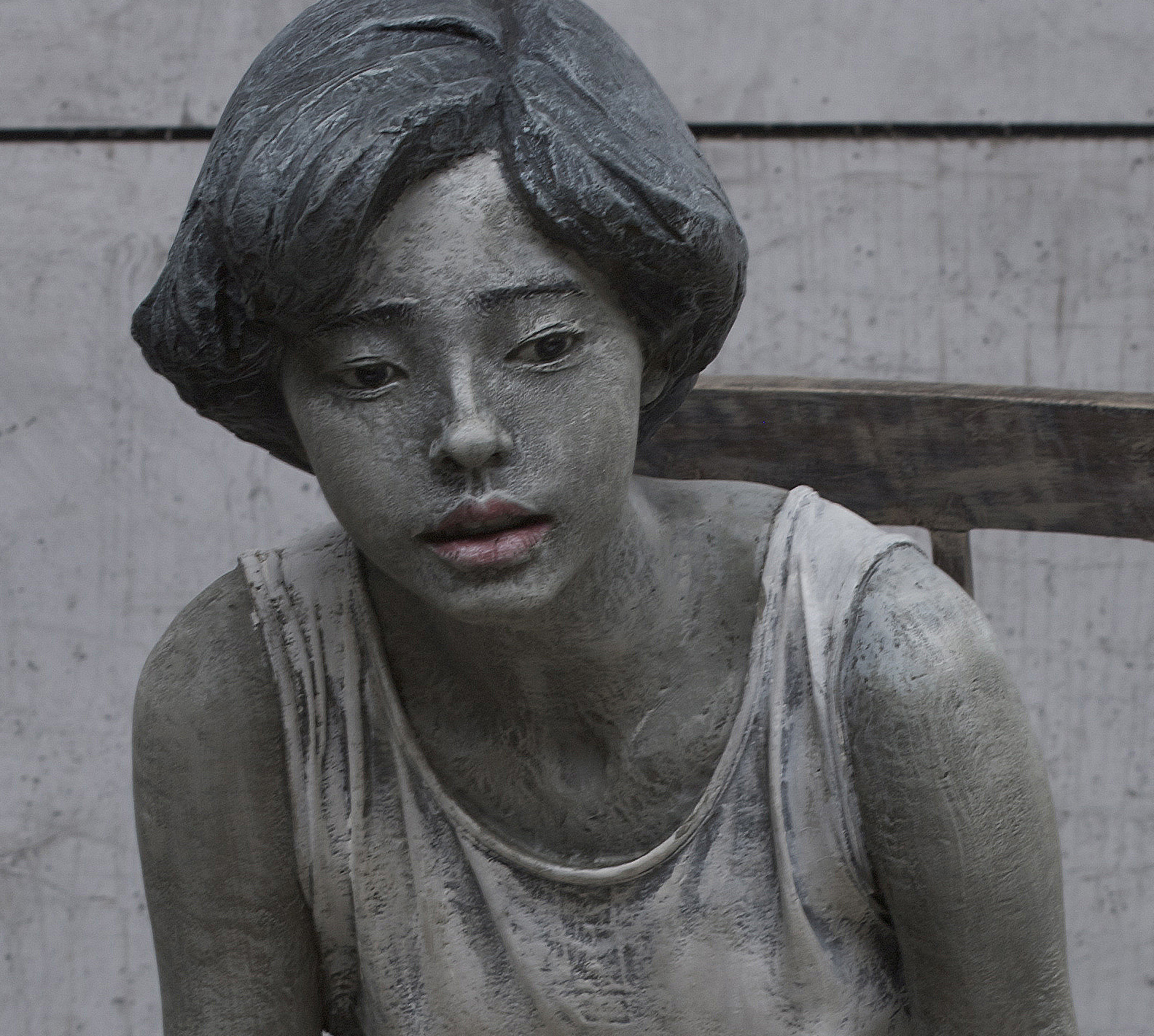
This work, the representative work of the artist, was made after 1989. Artworks in this period of time are mainly based on various people in life, expressing the doubt and hesitation of the artist. Sitting Girl shows originally a girl’s surprise, thriving and a bit scared when she just experienced her menarche, an element of hesitation and uncertainty was created by using a real chair with only two legs on the land. Just like adults often think about life and death, the girl seems thinking about the problem of standing up or sitting down. However, the movement of this moment was completed by using Hyperrealistic method.
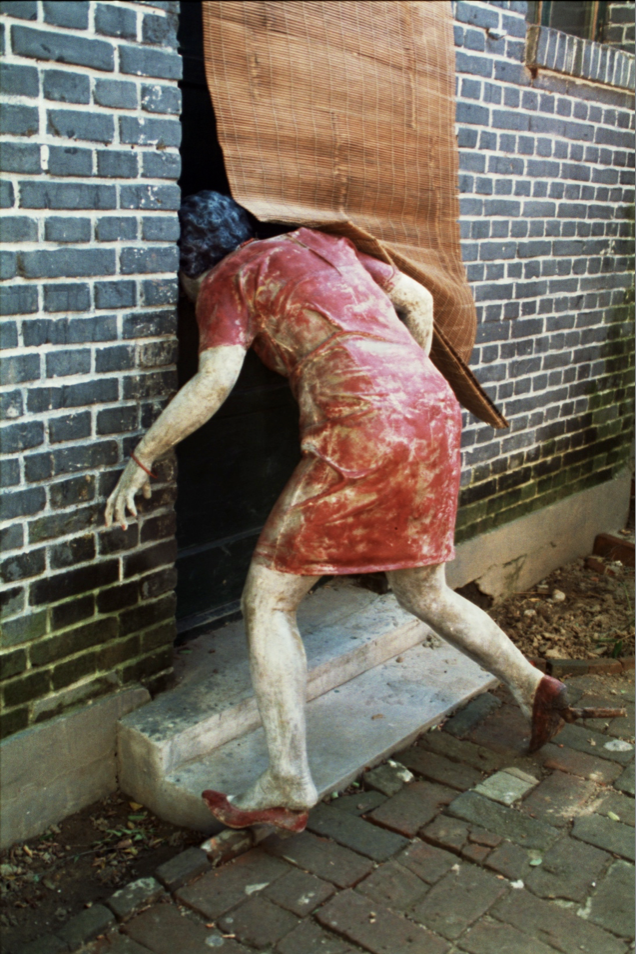
Tracing back the formation of expression technique of Hyperrealism, it is the original motivation of the artist that we need to look at. At the end of 1980s, when sublimity and “big soul” were flourishing in Chinese art, there was a tend of looking for popularized new realism arising. This popularized interest and non-expressional method allows artists to navigate themselves. Maybe only when you put yourself at the start can you find your true self. Thus, under the condition of having entirely different environment, a tend of hyperrealism in sculpture and painting which was similar to the situation in the US in 2980s arose. However, these artists presented various works. What made Zhan Wang different is that he emphasized in the series of works represented by Sitting Girl the element of objectivity and concept strongly, which is a way of expression based on concept and influenced the artist’s further works. This series also includes The Pavement, Losing Balance, Man Wearing Mao Suit, etc.
At the beginning of 1990s, Zhan Wang cooperated with others to make the sculpture The Pavement in National Olympic Sports Center for the Asian Games, and set up “Three People’s Joint Studio” with Sui Jianguo and Yu Fan, looking for outlets for new art. He also made works with Zhang Defeng by using the technique of combining molding real objects with sculpting in order to reach the effect of faking the real which became the pioneer at that time. This Hyperrealistic method solved the confusion when he made the realistic work The Street. Without using any methods, the work lets the art language to go back to zero so that the audience will notice the concept instead of the technique. Because of this thought, Zhan Wang began to realize the concept within the artwork and started to look for more stable and personal methods to express the concept. The Hyperrealistic sculpture Sitting Girl made in 1992 was recognized as the classic in art history nowadays, Man Wearing Mao Suit,which was made afterward was recognized as the beginning of Chinese contemporary new sculpture.
--"Key Works to See the Opportunities and Turning Points in Zhan Wang's career", Artron, 2017/6/24
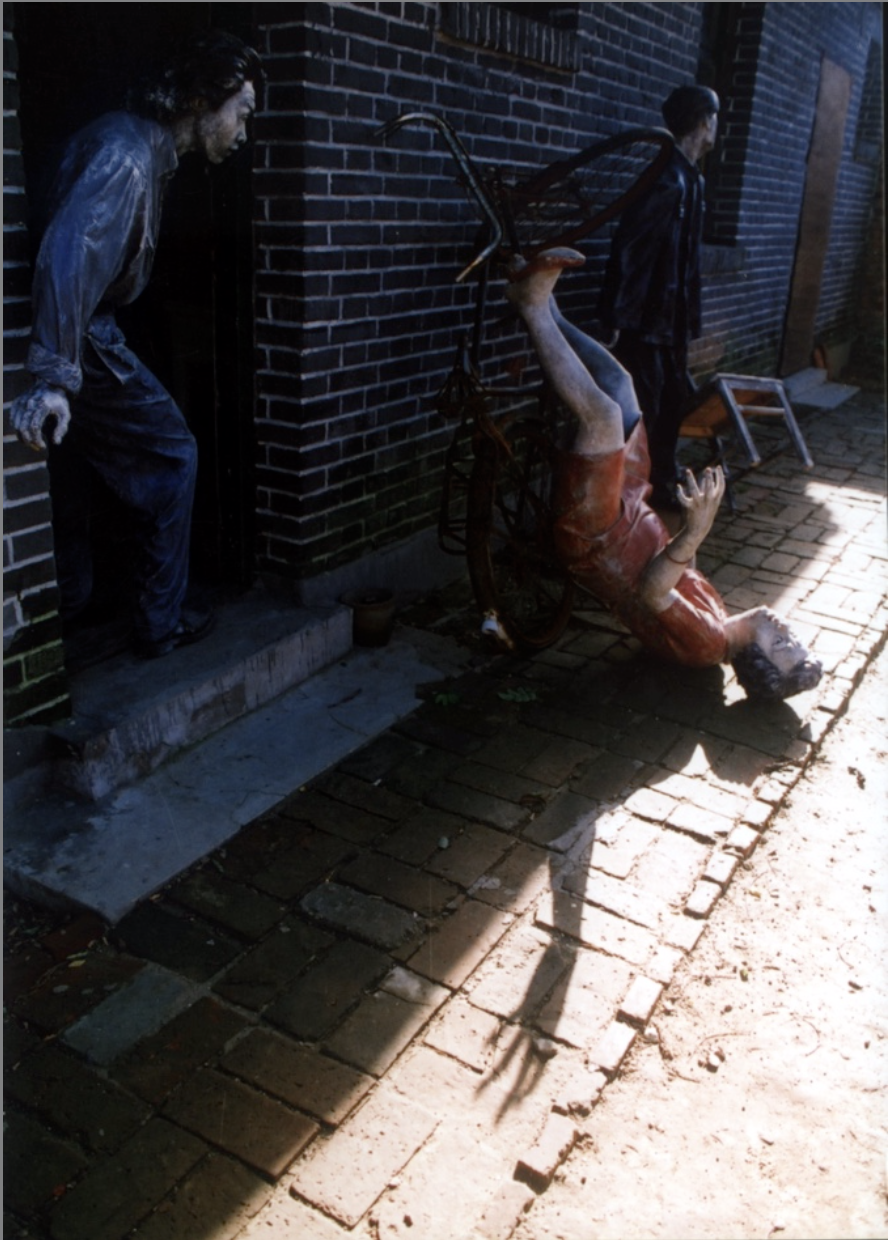
In 1990, Shan Wang adopted the concept of super realism in the work "Sidewalk". In these sculptures, Zhan Wang started by making a complete human figure, then put clothes on them and fix the clothes, finally cast them into hard material and add color. He used this working process to empty himself, to reset and forget about all the sculpture languages accumulated by his predecessors. Starting from the scratch, from the unknown, in another way, also starting from life around him, he began to learn to see the world with his own eyes(rather than through the "colored glasses" created by other people's styles).-- Liu Libin, Excitement, Reset, Confrontation, Ordinary— States of Work by Zhan Wang

Zhan Wang thinks the language of Hyperrealistic sculpture is westernized and lack of eastern creation, longing to get rid of academic mode and dig the relation between self and society. The reason why he chose to take Mao Suit as the media is that there is suggestive meaning inside to some extent and he used Mao Suit to represent Chinese, including the artist himself, and some characteristics. When Zhan Wang was doing the interview, he remembered that this try "seemed to have a weird effect and also profound", but "it challenged the boundary between sculpture and installation, subject and object", described by art critic Wu Hong.
In 1993, Zhan Wang created a sculpture called Man Wearing Mao Suit, which is the origin of "temptation" series. Later, Zhan Wang released the concept of art, installaiton and sculpture and opened up his mind thouroughly.
--"Key Works to See the Opportunities and Turning Points in Zhan Wang's career", Artron, 2017/6/24
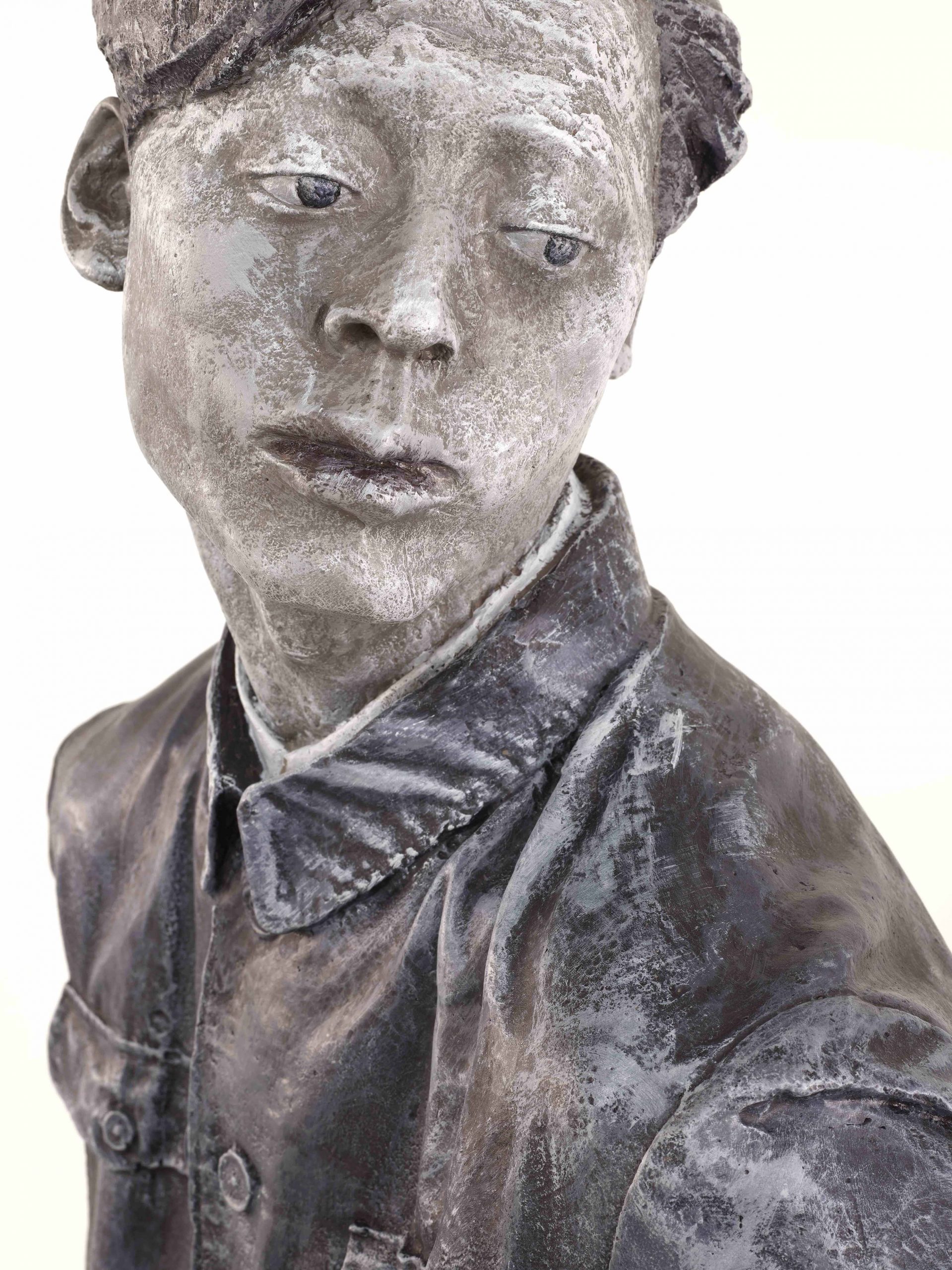
In Mao Suit Man, Zhan Wang captured the moment when a man in Mao suit squeezed from the front and back. The pressures from conflicting directions forced the man in an awkward pose. Thus, the artist created a method of molding and casting ready-made cloths. As the artist said:” Super realistic art is completely true and objective and against expressive art… This is not to make the audiences focus on my tactics, but to let them pay attention to the ideas in my works.”
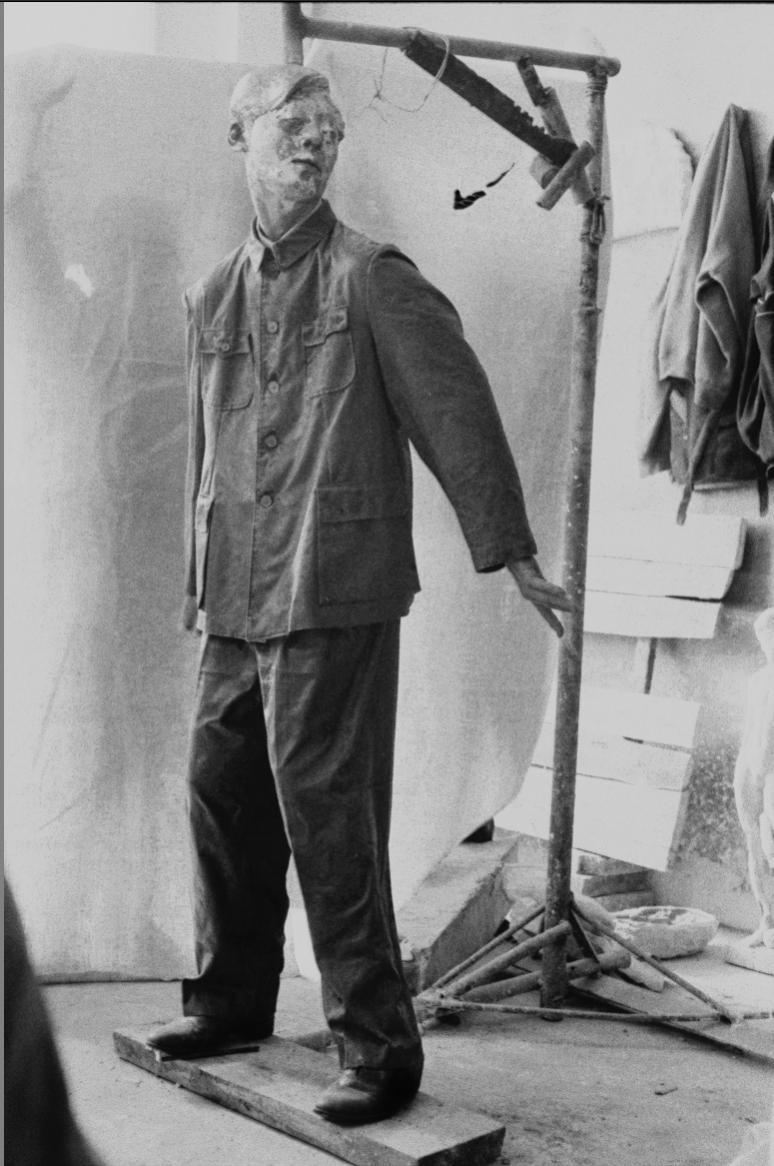
Mao Suit Man was created in 1992 - 1993. “Mao suit” was designed by Sun Yat-sen as a form of national dress with distinct political symbolism. During 1949 - 1989, Mao suit was the main clothing for workers, peasants and soldiers in China, but also a formal clothing. People in Mao suit give people a strict and dignified impression. However, Zhan Wang’s Mao suit implies intense, painful, distorted and even bizarre bodies. After Mao Suit Man, Zhan created another series of artworks Empty Soul · Empty by taking bodies out from Mao suit Man. Empty Soul · Empty debuted in Zhan’s solo show in China Central Academy of Fine Art in 1994. Mao Suit Man was exhibited in group show “Breaking the Image” at Sishang Art Museum in Beijing in 2015.
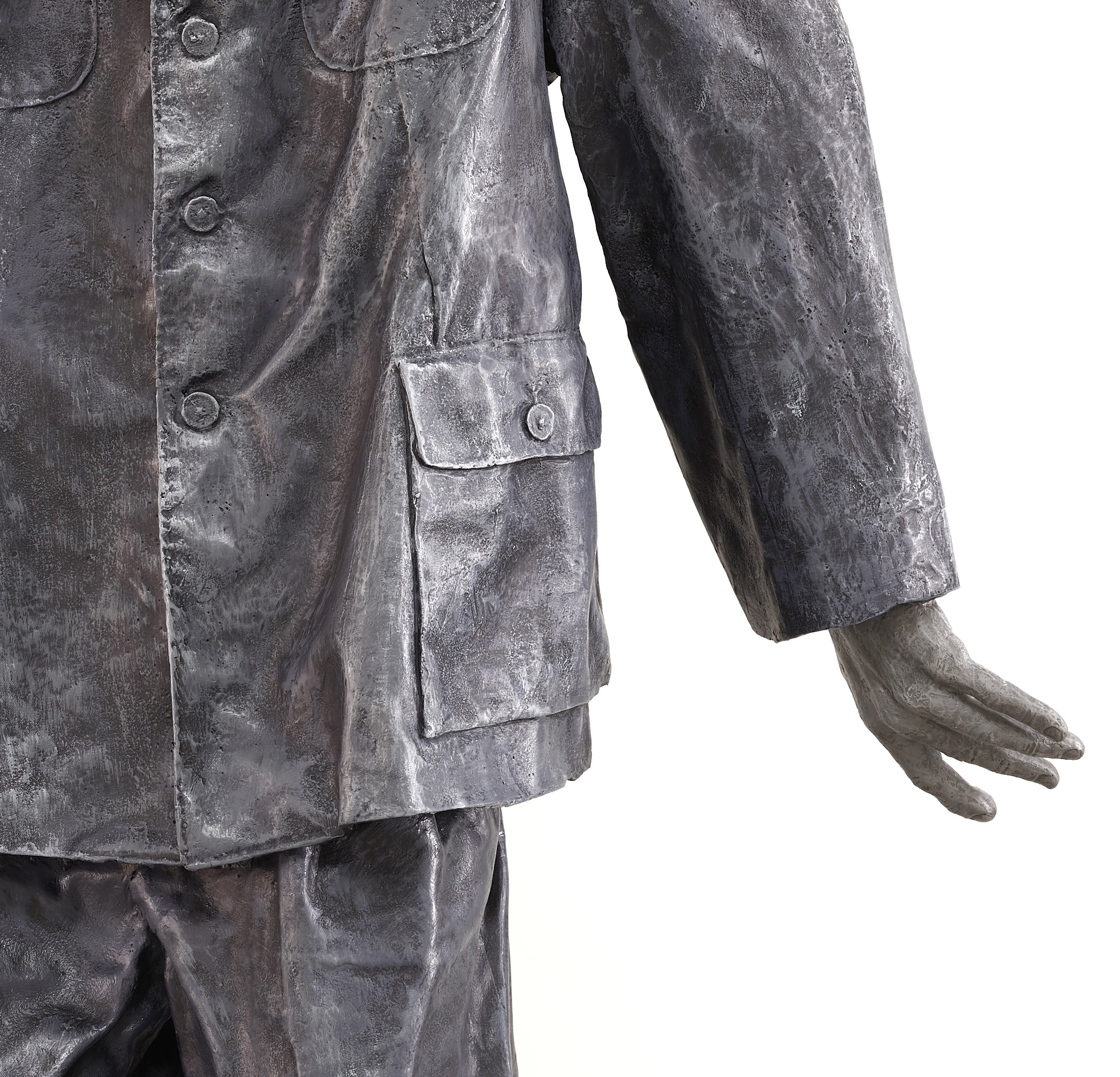
This series of sculptures was started during the second half of 1993, and was first exhibited in the month of April in 1994. When the 18 sculptures of the series were exhibited they were suspended in their fall from scaffolding or rested writhing on a mound of dirt. This series of works was named Empty Soul Empty—Temptation series.
The movements portrayed in these sculptures are all different, but at the same time they are all characterized by being unusual movements. The final result of the artist’s experimentation is a series of empty shells representing the Mao suit whose unusual contortions look both appropriate and in conflict with the seriousness and gravity the Mao suit has conveyed for a century. Apparently this was just a game carried out by the artist, but what lies under the façade of this game does really represent the artist’s thought about desires and his attention and perception towards people’s psychological twists and turns. It is like when we see a cicada abandoning its cast: even if it seems a real struggle, it is just the process of abandoning the cast and of emptying the cicada has to go through. This work brings together the conflicting notions of braveness and nihility, and is aimed at reflecting on the interaction between the sense of gravity and of lightness residing in people’s hearts. “Because of the specific artistic language of Zhan Wang, even if the Mao suits, their contortions and their way of being displayed all carry a clear link with society, the extraordinary aspect of this work lies in the relationship it creates between real and surreal. This is also due to the material feeling realistically conveyed through the texture of the cloths combined with a feeling of emptiness.

Empty Soul Empty—Temptation, Solo Exhibition Installation View, 1994, CAFA Gallery, Beijing
[My aim is ] To get rid of the body by keeping only its outer shell that is constituted by the clothes. Request: To maintain the lifelike results of the movements of the body, the shape of the body and the folds of the clothes.
This was my very first idea when in 1994 I started to work on the piece “Temptation”. The starting point of this work was a rather absurd idea, but even if I tried to follow a more rational path to create my piece, I found myself entangled with the absurd dimension. Later on I transformed many assumptions into real possibilities.
The shells had to preserve the real aspect they had before I started to work on them and change them.The spiritual transformation they went through was similar to that of a cicada: the moment just before the transformation of a cicada occurs the cicada has already reached the highest grade of suffering and of convulsion. This specific detail provided me with the inspiration to portray human figures while making unusual contortions. The crux of the point was in the fact that this work used the combined notions of void and lightness to express the state of mind mentioned above.
The Mao suit is a cultural metaphor responding to a specific meaning, and it is because I noticed this aspect that I employed it as a medium in my sculptural works in a highly overt way. When a certain living organism cannot follow its own natural course of development because it is influenced by outer forces that make it develop in an unnatural way, then its form often appears to be distorted.

Bury-Mao Suit Outer Form, Installation View, 2002, Guangzhou Museum of Art
Because of the outer pressures, life’s real needs cannot do but retreat, responding to what is labeled as the rule of “the survival of the fittest.”Once people’s thought and actions have become abnormal, people turn submissive, utilitarian, and even kitsch. But what we mean by the notion of “person” still remains; therefore the notion of “person”in itself has not become abnormal. Genuine knowledge always presents itself as intuitive knowledge; but the so called “rules of survival” always menace people who constantly fight painfully against the contrasting feelings of pressure and relief. The combination of primeval desires with the control exerted by education has given birth to the sad and moving song of the evolution of human civilization. Desires have brought catastrophes and pain to humanity, but desires have also been able to encourage humanity go on living with a positive attitude right because life should go on and develop.
These shells are the secretions of my art and life; actually they have already turned into natural elements. A direct cause of this is that I have always been trying to get rid of human traces even in those art works of mine filled with charm. The direct understanding of many issues will cause our mind to feel suspended, pervaded by a feeling of fakeness, instability and at the same time joy. The relationship among art, life and politics has obliged us to find a new way togo on living, but this illusory way of living is a great temptation for those who have been trying over the years to free the spirit.
Zhan Wang
Sanlitun Chaoyang District, Beijing
September 11, 1994

Zhan Wang: "Mao Suit Man"
This online viewing room will present Zhan Wang's work in the early 90's. The works in this period focus on the relationship between individual and society, and also reflect the transition and transformation of Zhan Wang's sculptural language from realism to concept. The online viewing room will be launched from 8 August 18:00 to 14 August 24:00 (CST).

It was in 1990 when I started to work individually. In that year, I cooperated with my classmates and made The Pavement together in front of the entrance of National Olympic Sports Center for the Asian Games, the theme was depicting ordinary people of anti-hero image. In fact, I had already expressed the concept of ordinary people in the work of The Street that I made for graduation in 1988. I accepted various traditional methods and influences in many ways so I did not fine my own language.
Although I used the concept and method of Hyperrealism which is making a real human sculpture and molding the whole after putting on real clothes in later series of works such as Sitting Girl, I can still empty my mind and forgetting all sculptural languages accumulated by predecessors. Starting from the beginning and unknown is also starting from life itself, using my own eyes to see the world.
However, what was unexpected is that when I truly open my eyes, what I found first was endless pain: a hopeless uncertainty; a chaotic logic; and negative intuition. Thus, I began to bypass all emotions making use of creating art and artwork, pretending to withdraw myself from everything. I began to complete the deduction of rational structure and language, getting closer to the truth and finding some methods gradually and solving problems.
If you ask me what is my life experience, I would say it is more interesting to be company with unknown and knowledge.
—— Zhan Wang, "My Universe: My Work", Art Guide, 2014

Sold in the first auction of Christie's (Shanghai) for RMB 5.6625 million in 2013.
This work, the representative work of the artist, was made after 1989. Artworks in this period of time are mainly based on various people in life, expressing the doubt and hesitation of the artist. Sitting Girl shows originally a girl’s surprise, thriving and a bit scared when she just experienced her menarche, an element of hesitation and uncertainty was created by using a real chair with only two legs on the land. Just like adults often think about life and death, the girl seems thinking about the problem of standing up or sitting down. However, the movement of this moment was completed by using Hyperrealistic method. -- Zhan Wang

Tracing back the formation of expression technique of Hyperrealism, it is the original motivation of the artist that we need to look at. At the end of 1980s, when sublimity and “big soul” were flourishing in Chinese art, there was a tend of looking for popularized new realism arising. This popularized interest and non-expressional method allows artists to navigate themselves. Maybe only when you put yourself at the start can you find your true self. Thus, under the condition of having entirely different environment, a tend of hyperrealism in sculpture and painting which was similar to the situation in the US in 2980s arose. However, these artists presented various works. What made Zhan Wang different is that he emphasized in the series of works represented by Sitting Girl the element of objectivity and concept strongly, which is a way of expression based on concept and influenced the artist’s further works. This series also includes The Pavement, Losing Balance, Man Wearing Mao Suit, etc. —— Zhan Wang

At the beginning of 1990s, Zhan Wang cooperated with others to make the sculpture The Pavement in National Olympic Sports Center for the Asian Games, and set up “Three People’s Joint Studio” with Sui Jianguo and Yu Fan, looking for outlets for new art. He also made works with Zhang Defeng by using the technique of combining molding real objects with sculpting in order to reach the effect of faking the real which became the pioneer at that time. This Hyperrealistic method solved the confusion when he made the realistic work The Street. Without using any methods, the work lets the art language to go back to zero so that the audience will notice the concept instead of the technique. Because of this thought, Zhan Wang began to realize the concept within the artwork and started to look for more stable and personal methods to express the concept. The Hyperrealistic sculpture Sitting Girl made in 1992 was recognized as the classic in art history nowadays, Man Wearing Mao Suit,which was made afterward was recognized as the beginning of Chinese contemporary new sculpture. --"Key Works to See the Opportunities and Turning Points in Zhan Wang's career", Artron.net, 2017/6/24
In 1990, Shan Wang adopted the concept of super realism in the work "Sidewalk". In these sculptures, Zhan Wang started by making a complete human figure, then put clothes on them and fix the clothes, finally cast them into hard material and add color. He used this working process to empty himself, to reset and forget about all the sculpture languages accumulated by his predecessors. Starting from the scratch, from the unknown, in another way, also starting from life around him, he began to learn to see the world with his own eyes(rather than through the "colored glasses" created by other people's styles).
-- Liu Libin, Excitement, Reset, Confrontation, Ordinary— States of Work by Zhan Wang
-- "Not Being Able to See the End Feels Good", TopArt, 2016/2

Zhan Wang thinks the language of Hyperrealistic sculpture is westernized and lack of eastern creation, longing to get rid of academic mode and dig the relation between self and society. The reason why he chose to take Mao Suit as the media is that there is suggestive meaning inside to some extent and he used Mao Suit to represent Chinese, including the artist himself, and some characteristics. When Zhan Wang was doing the interview, he remembered that this try "seemed to have a weird effect and also profound", but "it challenged the boundary between sculpture and installation, subject and object", described by art critic Wu Hong.
In 1993, Zhan Wang created a sculpture called Man Wearing Mao Suit, which is the origin of "temptation" series. Later, Zhan Wang released the concept of art, installaiton and sculpture and opened up his mind thouroughly. --"Key Works to See the Opportunities and Turning Points in Zhan Wang's career", Artron.net, 2017/6/24

In Mao Suit Man, Zhan Wang captured the moment when a man in Mao suit squeezed from the front and back. The pressures from conflicting directions forced the man in an awkward pose. Thus, the artist created a method of molding and casting ready-made cloths. As the artist said:” Super realistic art is completely true and objective and against expressive art… This is not to make the audiences focus on my tactics, but to let them pay attention to the ideas in my works.”

Mao Suit Man was created in 1992 - 1993. “Mao suit” was designed by Sun Yat-sen as a form of national dress with distinct political symbolism. During 1949 - 1989, Mao suit was the main clothing for workers, peasants and soldiers in China, but also a formal clothing. People in Mao suit give people a strict and dignified impression. However, Zhan Wang’s Mao suit implies intense, painful, distorted and even bizarre bodies. After Mao Suit Man, Zhan created another series of artworks Empty Soul · Empty by taking bodies out from Mao suit Man. Empty Soul · Empty debuted in Zhan’s solo show in China Central Academy of Fine Art in 1994. Mao Suit Man was exhibited in group show “Breaking the Image” at Sishang Art Museum in Beijing in 2015.

This series of sculptures was started during the second half of 1993, and was first exhibited in the month of April in 1994. When the 18 sculptures of the series were exhibited they were suspended in their fall from scaffolding or rested writhing on a mound of dirt. This series of works was named Empty Soul Empty—Temptation series.
The movements portrayed in these sculptures are all different, but at the same time they are all characterized by being unusual movements. The final result of the artist’s experimentation is a series of empty shells representing the Mao suit whose unusual contortions look both appropriate and in conflict with the seriousness and gravity the Mao suit has conveyed for a century. Apparently this was just a game carried out by the artist, but what lies under the façade of this game does really represent the artist’s thought about desires and his attention and perception towards people’s psychological twists and turns. It is like when we see a cicada abandoning its cast: even if it seems a real struggle, it is just the process of abandoning the cast and of emptying the cicada has to go through. This work brings together the conflicting notions of braveness and nihility, and is aimed at reflecting on the interaction between the sense of gravity and of lightness residing in people’s hearts. “Because of the specific artistic language of Zhan Wang, even if the Mao suits, their contortions and their way of being displayed all carry a clear link with society, the extraordinary aspect of this work lies in the relationship it creates between real and surreal. This is also due to the material feeling realistically conveyed through the texture of the cloths combined with a feeling of emptiness.

Empty Soul Empty—Temptation, Solo Exhibition Installation View, 1994, CAFA Gallery, Beijing
[My aim is ] To get rid of the body by keeping only its outer shell that is constituted by the clothes. Request: To maintain the lifelike results of the movements of the body, the shape of the body and the folds of the clothes.
This was my very first idea when in 1994 I started to work on the piece “Temptation”. The starting point of this work was a rather absurd idea, but even if I tried to follow a more rational path to create my piece, I found myself entangled with the absurd dimension. Later on I transformed many assumptions into real possibilities.
The shells had to preserve the real aspect they had before I started to work on them and change them.The spiritual transformation they went through was similar to that of a cicada: the moment just before the transformation of a cicada occurs the cicada has already reached the highest grade of suffering and of convulsion. This specific detail provided me with the inspiration to portray human figures while making unusual contortions. The crux of the point was in the fact that this work used the combined notions of void and lightness to express the state of mind mentioned above.
The Mao suit is a cultural metaphor responding to a specific meaning, and it is because I noticed this aspect that I employed it as a medium in my sculptural works in a highly overt way. When a certain living organism cannot follow its own natural course of development because it is influenced by outer forces that make it develop in an unnatural way, then its form often appears to be distorted.

Bury-Mao Suit Outer Form, Installation View, 2002, Guangzhou Museum of Art
Because of the outer pressures, life’s real needs cannot do but retreat, responding to what is labeled as the rule of “the survival of the fittest.”Once people’s thought and actions have become abnormal, people turn submissive, utilitarian, and even kitsch. But what we mean by the notion of “person” still remains; therefore the notion of “person”in itself has not become abnormal. Genuine knowledge always presents itself as intuitive knowledge; but the so called “rules of survival” always menace people who constantly fight painfully against the contrasting feelings of pressure and relief. The combination of primeval desires with the control exerted by education has given birth to the sad and moving song of the evolution of human civilization. Desires have brought catastrophes and pain to humanity, but desires have also been able to encourage humanity go on living with a positive attitude right because life should go on and develop.
These shells are the secretions of my art and life; actually they have already turned into natural elements. A direct cause of this is that I have always been trying to get rid of human traces even in those art works of mine filled with charm. The direct understanding of many issues will cause our mind to feel suspended, pervaded by a feeling of fakeness, instability and at the same time joy. The relationship among art, life and politics has obliged us to find a new way togo on living, but this illusory way of living is a great temptation for those who have been trying over the years to free the spirit.
Zhan Wang
Sanlitun Chaoyang District, Beijing
September 11, 1994


